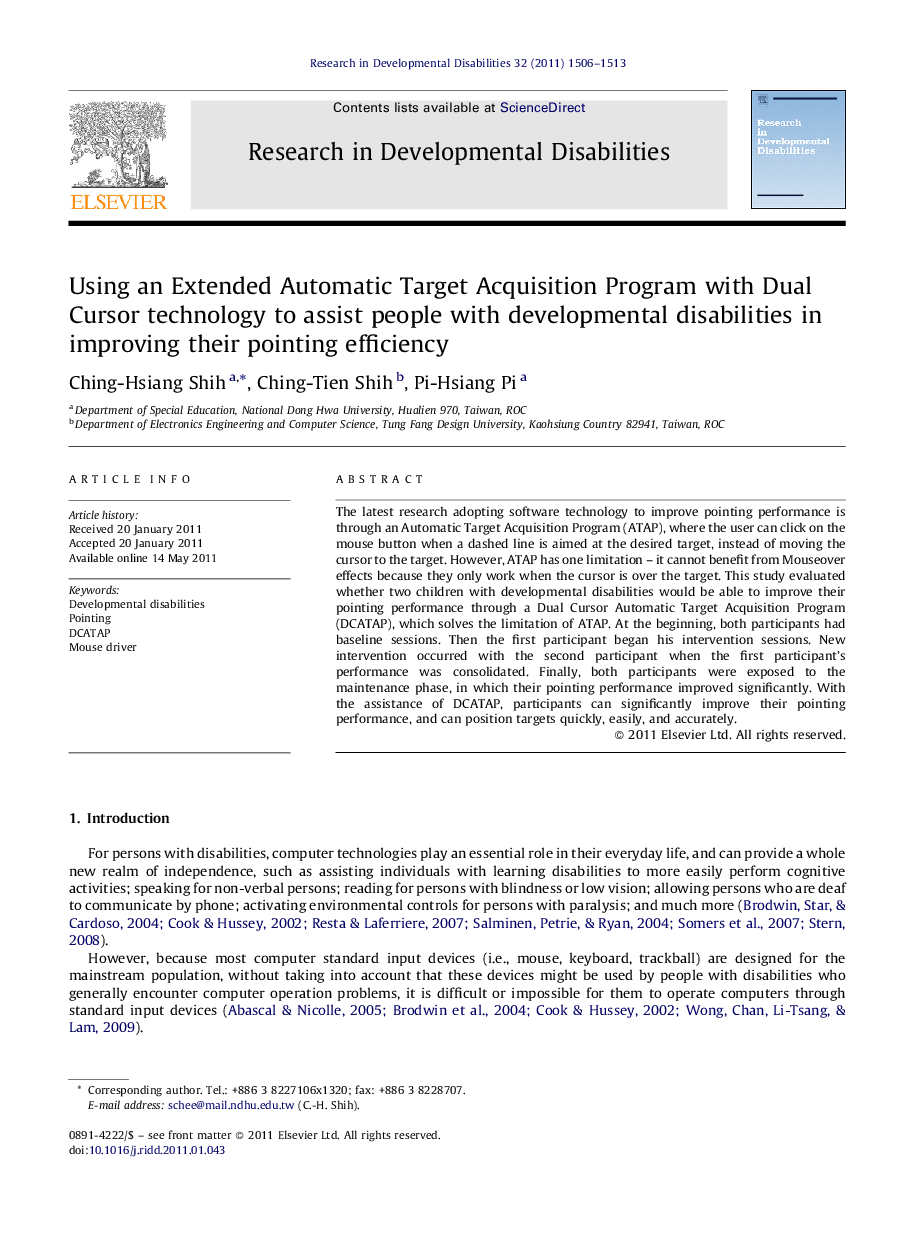| کد مقاله | کد نشریه | سال انتشار | مقاله انگلیسی | نسخه تمام متن |
|---|---|---|---|---|
| 371678 | 621937 | 2011 | 8 صفحه PDF | دانلود رایگان |

The latest research adopting software technology to improve pointing performance is through an Automatic Target Acquisition Program (ATAP), where the user can click on the mouse button when a dashed line is aimed at the desired target, instead of moving the cursor to the target. However, ATAP has one limitation – it cannot benefit from Mouseover effects because they only work when the cursor is over the target. This study evaluated whether two children with developmental disabilities would be able to improve their pointing performance through a Dual Cursor Automatic Target Acquisition Program (DCATAP), which solves the limitation of ATAP. At the beginning, both participants had baseline sessions. Then the first participant began his intervention sessions. New intervention occurred with the second participant when the first participant's performance was consolidated. Finally, both participants were exposed to the maintenance phase, in which their pointing performance improved significantly. With the assistance of DCATAP, participants can significantly improve their pointing performance, and can position targets quickly, easily, and accurately.
► Redesigning the mouse driver can adjust and set mouse functions to be more powerful.
► Dual Cursor technology is adopted to implement the function of ATAP with Mouseover effects.
► After the implementation of DCATAP, both participants rapidly improved their pointing efficiency.
Journal: Research in Developmental Disabilities - Volume 32, Issue 5, September–October 2011, Pages 1506–1513